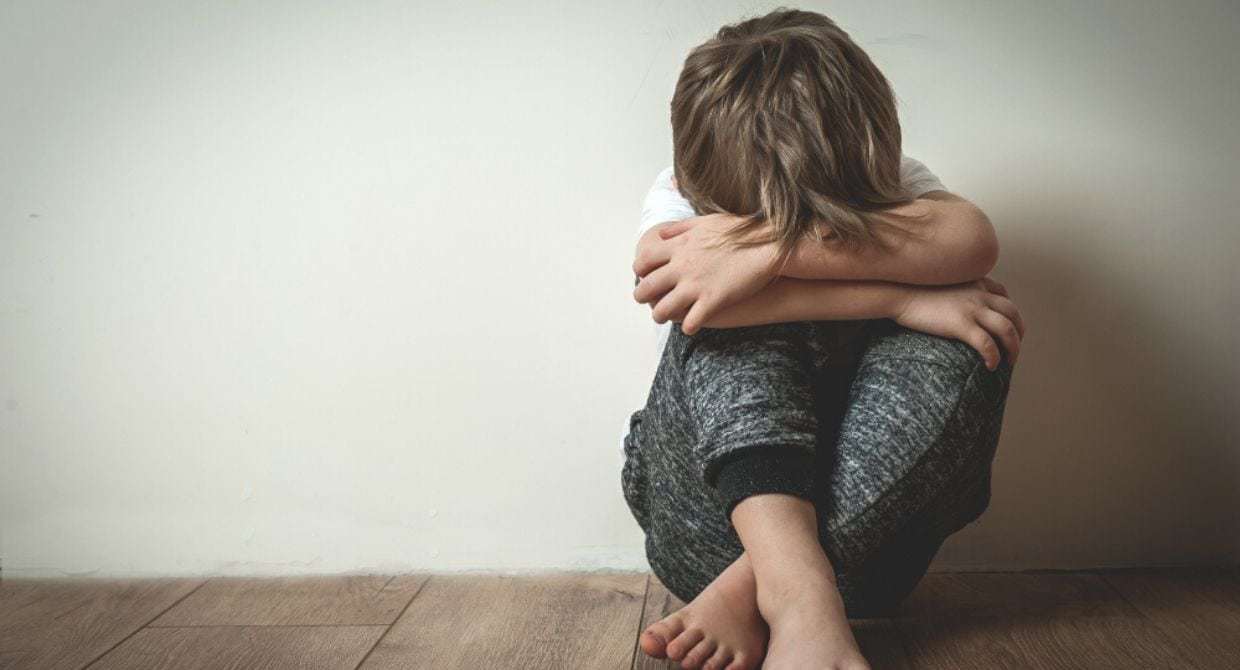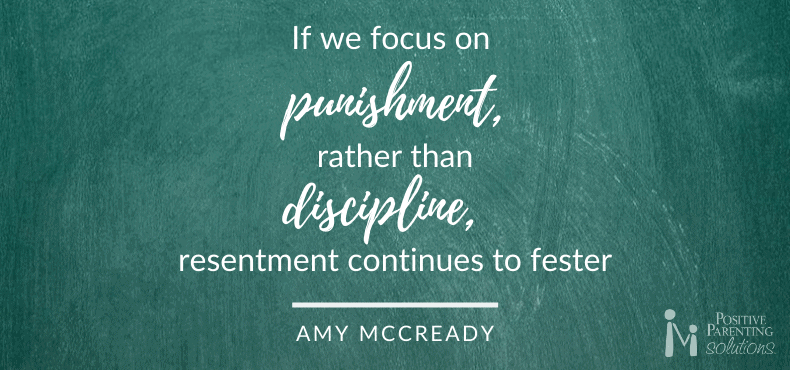Is Spanking an Effective Disciplinary Method?
Your son just bit his sister. Your daughter ran her bike into your parked car. They both smeared toothpaste all over the bathroom walls. Oh, and when you stepped away for a few moments, they tried to stick a fork in an electrical outlet.
The lowdown is–whether by accident or on purpose–kids are going to make bad choices. No matter how exasperating those choices are, it’s part of growing up.
We certainly made mistakes in our youth–probably many of the same ones our kids are making now. We know it’s part of the human experience.
The real questions are: How do we help our kids learn from these mistakes? What will help them be better human beings and keep them safe? Is there a particular discipline strategy that will have a lasting impact?
Many people turn to spanking when these questions arise. Maybe you were spanked as a kid and it feels instinctual. Maybe you were spanked and think, “I turned out ok.” Or maybe you think the war against spanking has gone a little overboard and is just politically-correct, generational propaganda.
Whether or not you’d like to keep spanking in your arsenal of disciplinary tools, it’s important to consider its usefulness.
Is spanking your child actually improving her behavior, or is it compounding it? Even if spanking makes her stop her actions momentarily, is she learning what she should do differently next time?
Proactive vs. Reactive Discipline: Which is More Effective?
Parents can handle a misbehavior in one of two ways–through punishment or discipline.
In our online course here at Positive Parenting Solutions, we help parents understand the ideological differences between “discipline” and “punishment.”
From a Positive Parenting perspective, the main discrepancy is actually quite simple. Discipline focuses on instructing and training our children in a PROACTIVE way, while punishment focuses on inflicting blame, shame, or pain for a past offense in a REACTIVE way.
Because spanking responds to a behavior after it occurs, it falls into the reactive category.
Unfortunately, being reactive isn’t a great way to address the root cause of a misbehavior; nor does it stop a misbehavior from reoccurring.
Being proactive, on the other hand, helps target the source of the misbehavior and focuses on creating a more sustainable solution.
Is Spanking an Effective Long-Term Solution?
Let’s say your daughter loves playing hide-and-seek. She’s young, precocious, and especially loves hiding in public places. The last time you went to the mall together, you turned your head for one minute and the next minute she was gone. You were scared to death when you couldn’t find her.
The panic and fear of losing a child is unbearable. So, when she finally comes out of the clothing rack she was hiding in, you’re relieved but also angry. You want to hug her, but then you want to spank her to ensure you won’t ever find yourselves in the same situation again.
Think for a moment; if you do decide to spank your daughter for playing one-sided hide-and-seek with you, are you actually teaching her what she did wrong?
Even if you take the time to explain to your daughter before or after you spank her that she scared you and she could have been lost (or kidnapped!), will she even remember or be listening?
When kids are processing the pain, fear, and shame that spanking can bring, they aren’t learning for the future. They aren’t thinking about how to make a better decision next time or why their decision was wrong in the first place. They are in self-defense mode, plain and simple, and are not internalizing the lesson you are trying to convey.
Maybe the pain and humiliation from spanking is enough for some kids not to repeat their actions. For many kids, though, spanking just fuels their fiery furnaces. It can make them more obstinate and determined to fight back. Either way, spanking doesn’t help kids understand why their action was wrong or what they should do differently next time.
Because spanking is a form of punishment–and because punishment doesn’t address the core reason behind misbehavior–it’s not an effective long-term solution.
If spanking isn’t an effective long-term solution, is it an appropriate discipline strategy–even in the short term? To answer this question, let’s review the goals of discipline …
Goal of Discipline #1: Target the Underlying Causes of Behavior
As a positive parenting educator, there is one principle from Adlerian Psychology that we base ALL our strategies on and it is this: No behavior is random. There is always an underlying reason for misbehavior.
Here are some of the underlying reasons kids misbehave:
Lack of Impulse Control
Parents often expect kids to act like and reason like adults. We fail to understand why kids can’t comply to even the simplest requests and we become frustrated and even mad at their misbehavior.
One key thing to remember is that misbehavior doesn’t always stem from a negative, defiant place. It can stem from a basic lack of impulse control.
The 4-year-old that tramples your neighbor’s pristine garden to pick a daisy isn’t aware of the trail of crushed plants she’s leaving behind. Nor is she predicting the scolding the neighbor may soon unleash upon you both. She just sees a pretty flower and wants to touch it, smell it, and keep it.
The 6-year-old who whacks his younger brother for destroying, in a matter of seconds, the sand castle it took him two hours to create, may be suffering from the same lack of impulse control.
If we spank children for trampling the neighbor’s garden, or even hitting a sibling, imagine what must be going through their minds. “Don’t you always say you love me more than anything in the world? Why are you doing this to me? I’m not sure how, but I must be a really bad person.”
When we spank our kids in the heat of the moment out of frustration and anger, it’s also a reflection of our own lack of impulse control. It makes sense that we don’t want to model that behavior–especially when it’s exactly what we’re teaching our kids NOT to do.
Attention
Every child has a need for attention. While it seems counterintuitive, when a child’s innate need for attention isn’t met, he will oftentimes seek it out in negative ways.
A toddler whining and begging for you to look at his latest LEGO DUPLO creation may decide to pick it up and throw it at you to finally catch your gaze. Your 8-year-old that is fed up with you doting on her little brother may decide to give him an obvious little pinch to bring the attention back towards her.
We must be aware that to a child, even negative attention is better than no attention at all. In this case, spanking definitely won’t stop the misbehavior–it will likely continue it.
Power
The misbehavior could also be rooted in your child’s need for power. Just like adults, children like to feel in control of their lives.
You’re probably wondering, “how does spanking my child fill his power bucket? Doesn’t it only show him that I’m in charge?”
Children get a huge hit of power when they are able to ruffle an adult’s feathers. Even when ruffled feathers results in a spanking, being able to trigger an adult to the point of losing their cool is a hit of power to a child. Spanking only ensures these power struggles will continue.
Revenge
With repeated punishment, discouragement and anger can build to the point where the child’s behavior escalates to revenge.
Intensified misbehavior and hurt feelings from both the parent and the child are signs that your child’s root cause of misbehavior has taken a darker turn.
If you’re using spanking as a tool and suspect your child is starting to act out of revenge towards you, consider that your method could be aggravating–rather than alleviating–the issues.
Goal of Discipline #2: Protect the Parent-Child Relationship
Much to our dismay, it isn’t possible to remain ever-popular with our children. Perhaps you’re already experiencing this. If not, go find a parent of tweens or teens! Unfortunately, parenting often means enforcing difficult lessons.
If this “tough love” often translates into spanking, however, consider if it is worth the potential damage to your parent-child bond.
Once again, when children are being spanked, they aren’t learning how or why their behavior is wrong. They aren’t learning any new skills they can use in the future. They’re learning that mom and dad are going to punish them for their actions. This can slowly erode parent-child trust. Then later, when you’re trying to communicate with them in a positive way, they may be less receptive.
If we focus on punishment, rather than discipline, resentment continues to fester and you’ll find yourself the target of an increasing number of power struggles. As your child becomes more and more defensive, future disciplinary methods become harder to enforce, and the relationship that you so desperately want to protect may become vulnerable.
Goal of Discipline #3: Promote Open Communication
Let’s say you’re still not convinced. All of the arguments above seem valid, but you think spanking has still worked for you and your child.
Consider, instead, one of the potential side effects–spanking increases the tendency for children to lie.
We already know that spanking makes kids defensive. And what’s a common way to defend bad behavior and avoid punishment? Lie about it.
Dishonesty can be a slippery slope. What may start as a little white lie to circumvent a spanking can turn into a steady pattern of untruths and omissions.
As punishment increases, so will secrecy and deception.
Inevitably, the lie is impossible to maintain, the truth spills out, and your reaction to the event will be worse than ever.
Ultimately, punishment proves ineffective at encouraging open and honest communication between you and your children. This, in turn, creates a vicious cycle of misunderstanding and misbehavior.
Final Thoughts
We’ve all heard the common phrase, “this will hurt me more than it hurts you.” While spanking may hurt you in the short term, it will negatively impact your child and your relationship with your child in the long run.
I know parenting isn’t easy. It’s likely the hardest job of all. But I don’t want your efforts to be in vain.
After my many years as a parenting educator and, most importantly, as a mom, I advise you to make parenting easier and more effective by choosing discipline over punishment.
This is exactly what I did over 15 years ago when I said “so long” to yelling and punishment and spent years researching alternative methods. After seeing the life-changing effects on my own family, I knew I had to share them with others–that’s how Positive Parenting Solutions was born.
If you’d like to learn how to get your kids to listen–without yelling or spanking–I’d love for you to JOIN ME FOR A FREE ONLINE CLASS.
Be proactive by finding long-term solutions. Find the root cause of the misbehavior. Focus on your parent-child relationship. Promote the best possible communication.
And say “so long!” to spanking.
Title image: Sharomka / Shutterstock www.shutterstock.com/photos
What You Should Do Next:
1. Get Quick Actionable TIPS delivered to your inbox
Sign up for my newsletter for parenting tips to help you create a happier home and become the parent you always wanted to be. Plus, when you subscribe, I'll also send you a copy of our strategy-packed guide 10 Tips for Better Behavior – Starting NOW!
2. Unlock the secrets to easier parenting in my FREE CLASS
Register for my free class called How to Get Kids to Listen, Without Nagging, Yelling or Losing Control. Classes run several times per week to accommodate your busy schedule.
3. Transform your family with the 7-Step Parenting Success System® Course
Join the hundreds of thousands of parents who have transformed their families with the 7-Step Parenting Success System® Course. Learn the tools you need to raise happy, respectful, responsible kids and create the family life you always dreamed of having.
About the Author








